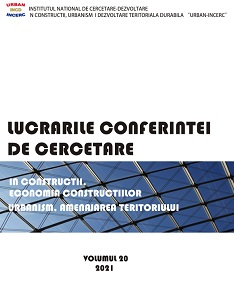Implicare şi participare în planificarea infrastructurilor verzi
Involment and participation in planning green infrastructures
Author(s): Oana Catalina Popescu
Subject(s): Physical Geopgraphy, Environmental Geography, Applied Geography, Governance, Policy, planning, forecast and speculation, Human Ecology, Political Ecology, Environmental interactions, Socio-Economic Research
Published by: INCD URBAN-INCERC
Keywords: participatory urban planning; co-participation; urban nature; local community; ecological networks;
Summary/Abstract: The aim of the research is to identify how the participation of local communities influences the planning process of green infrastructure both at urban and regional level. For that, the existing connections between concepts such as participation, civil society, participatory planning/co-participation - on one side - and the urban planning process / the planning of urban green space and green infrastructures - on the other side - were researched. The actors of participatory urban planning were identified, especially the groups of local actors, involved in green infrastructure planning, as well as the new type of citizen participation through forms of collective action and protests aimed at city development and its local environmental issues. The types of approaches and barriers that occur in participatory planning, and how the community can get involved in the design and planning of ecological networks were presented. The channels through which the inhabitants of the city can get involved in urban design in general and in the case of urban green infrastructure, in particular, with the help of new technologies and online applications, such as VGI, were also researched. One of the conclusions is that participatory planning can improve the quality of urban planning through different approaches. However, regarding the involvement of the community and various social groups in the planning of green infrastructure, the results show, surprisingly, that it is recommended that designers consider the participation of certain stakeholders and a strategy for their participation. Another conclusion is that the involvement of citizens in the planning of urban projects is facilitated by new technologies and online applications and that data from social media give citizens the opportunity to get more involved to protect the environment in which they live and therefore these data can thus be used in a transparent and democratic participatory process.
- Page Range: 55-66
- Page Count: 12
- Publication Year: 2021
- Language: Romanian
- Content File-PDF

